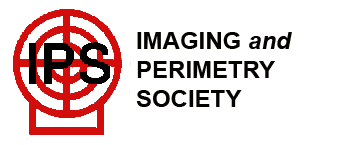 |
|
|
|
The age of Standardization: Hans Goldmann 1945
Hans Goldmann of Bern devised a hemispheric bowl, with a self-illuminated, projection perimeter, in 1945, in which fixation, retinal adaptation, and stimulus size and intensity could be precisely controlled. The visual field could be readily recorded by means of an ingenious pantograph. This allowed elegant mapping of defect shape and was easy for the perimetrist to use. Although superficially easy, it took years to become accomplished using the device.
By concentrating test locations where one expected visual field defects in glaucoma the yield of finding visual field damage was substantially increased. This dependable instrument, made by Haag-Streit of Bern, became the industry standard kinetic perimeter. By controlling so many variables, it allowed direct comparisons of visual field plots made anywhere. It is still in use today and integral for neuro-ophthalmologic diagnosis and following glaucoma patients once visual field damage is moderate to severe. It never caught on as a threshold static perimetry device because this method of testing was cumbersome.
The advantages of static threshold perimetry were pointed out in 1933 by Louise L Sloan, but the technique did not become popular until Harms and Aulhorn developed a perimeter specifically designed to do static threshold perimetry. This was commonly called the 'Tübinger Perimeter' and was made by Oculus in 1959. Cross-sections of the 'island of vision' could be made by finding the threshold sensitivity at various locations along a single meridian.
Continue to The age of automation: automating the Goldmann bowl: 1980 back to The age of isopter perimetry: Bjerrum and the tangent screen back to Table of Contents
Copyright 2008. Imaging and Perimetry Society |